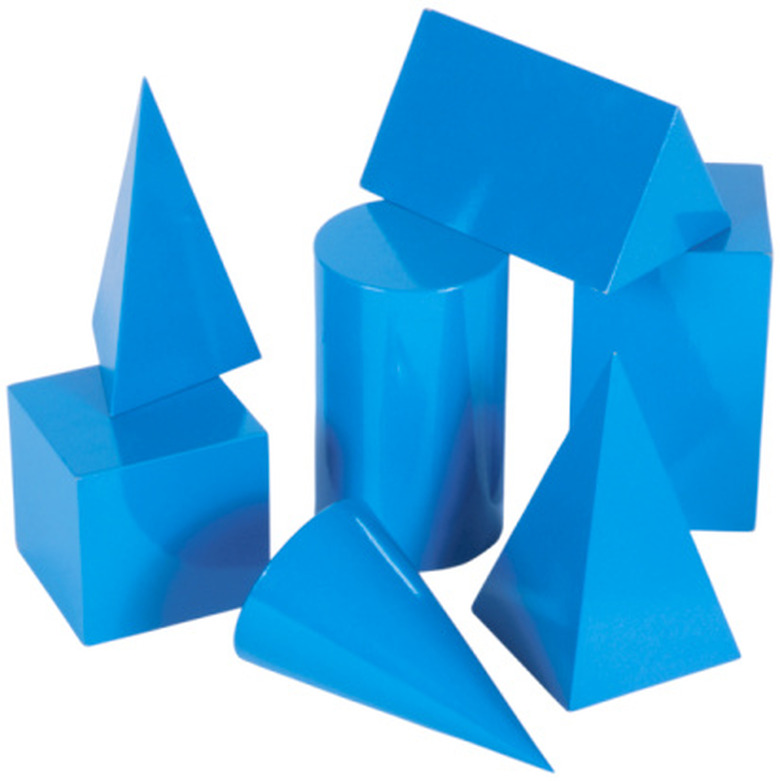Properties Of Rectangular Prisms
The properties of prisms are similar for every kind of prism with each one defined by the shape that makes up the base of the prism. Any polygon can be the base of a prism.
A rectangular prism is a three-dimensional solid with several properties relating to its shape, volume and surface area. Rectangular prisms, in particular, are one of the most fundamental and common shapes in three-dimensional geometry and are also used in fields such as carpentry and graphic design.
Prism: Math Definition
Prism: Math Definition
A prism is a type of three dimensional polyhedron. It has two "bases" that are parallel to each other. These bases are the same type of polygon. The other faces (aka the "sides") of the prism are parallelograms (this is true no matter what shape the bases are).
The name of that polygon is used to name the prism. For example, a prism with triangles for bases is called a triangular prism. Rectangle based prisms are called rectangular prisms. Octagon based prisms are called octagonal prisms, etc.
Volume
Volume
The volume of a three-dimensional solid is defined as the amount of matter it can hold inside its walls. The volume of a rectangular prism is calculated with one of two formulas:
\(\text{Volume } = \text{ length} × \text{ width } × \text{ depth} \
\text{ Volume }= \text{ area of the prism's base } × \text{ height of the prism }\)
An interesting property of rectangular prisms is that the type of rectangular prism with the highest volume relative to its surface area is a cube. In other words, the cube is the rectangular prism that optimizes volume capacity.
Surface Area
Surface Area
The surface area of a three-dimensional solid is the sum of the areas of all of its faces. A rectangular prism has six faces, commonly referred to as the base, top and four sides. The base and top always have the same area as do pairs of opposite sides.
The formula for the surface area of a rectangular prism is:
\(\text{S.A. } = 2(lw + wd + ld)\)
where "l," "w" and and "d" are the length, width and depth of the prism.
This formula is derived from how the area of each face is the product of the dimensions of the face. There are two sides with length and width dimensions, two with width and height dimensions and two with length and height dimensions.
Shape
Shape
A rectangular prism has a total of 24 angles (four on each of the six sides), all of which are perfect right angles (90 degrees). It has 12 edges, which can be divided into three groupings of four parallel lines (lines that never intersect).
Each edge intersects other edges in the prism perpendicularly (at a right angle). A rectangular prism whose length, width and depth are all equal is known as a cube.
Cross Sections
Cross Sections
A two-dimensional slice of a three-dimensional solid is called a cross section. Rectangular prisms have the unique property that a perpendicular cross section (a slice of the prism at a 90-degree angle) always creates a rectangle, no matter where on the prism the cross section is taken.
There are three different types of cross sections of a rectangular prism: x-axis, y-axis and z-axis cross sections, corresponding to slices along one of the three dimensions of space. The sum of these three cross sections is equal to half the surface area of the prism.
Rectangular Prisms in Real Life
Rectangular Prisms in Real Life
You can see rectangular prisms all over: tissue boxes, cereal cartons, sugar cubes, children's blocks and square cakes are just a few examples of prisms that you can see in real life.
Cite This Article
MLA
Wallulis, Karl. "Properties Of Rectangular Prisms" sciencing.com, https://www.sciencing.com/properties-rectangular-prisms-8154258/. 22 December 2020.
APA
Wallulis, Karl. (2020, December 22). Properties Of Rectangular Prisms. sciencing.com. Retrieved from https://www.sciencing.com/properties-rectangular-prisms-8154258/
Chicago
Wallulis, Karl. Properties Of Rectangular Prisms last modified March 24, 2022. https://www.sciencing.com/properties-rectangular-prisms-8154258/
